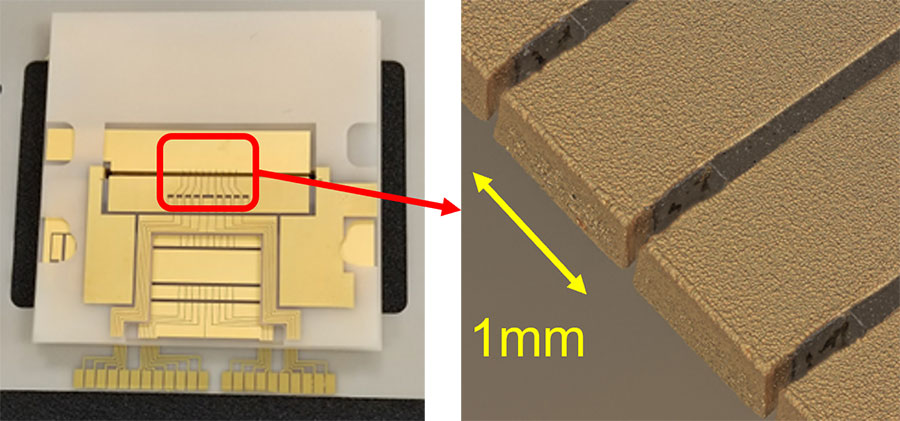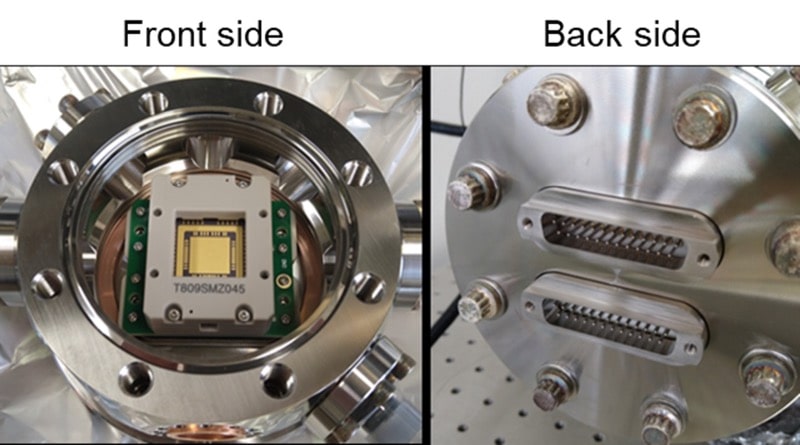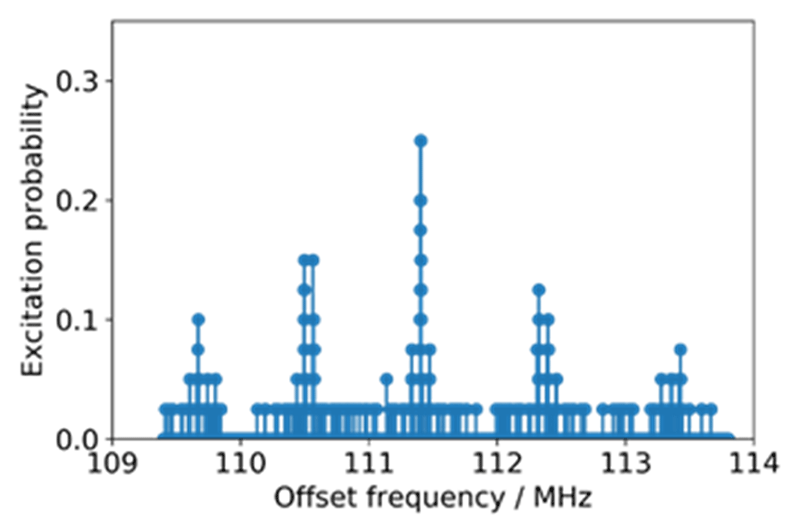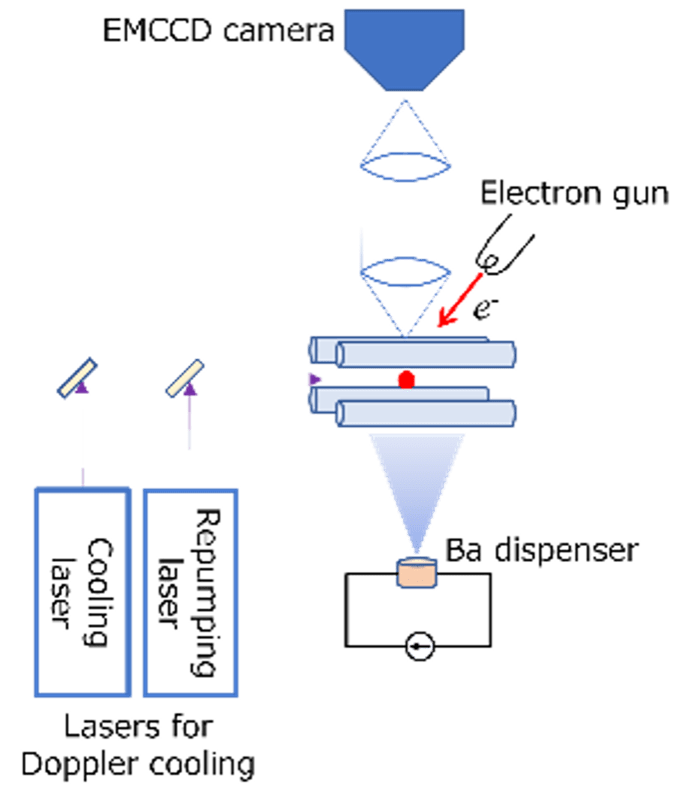Progress Report
Fault-tolerant Quantum Computing with Photonically Interconnected Ion Traps4-1. Fabrication and evaluation techniques of high-performance ion traps
Progress until FY2022
1. Outline of the project
To realize ion-trap modules for photonically-interconnected ion-trap quantum computing novel approaches have to be implemented to ion traps. The approaches include ion-photon quantum interconnect, microwave-based qubit control and quantum encoding to phonons. The goal of our R&D theme is to develop ion-trap fabrication and evaluation techniques to enable these approaches. We also try to join other ion-trap research groups in Japan to the development cycle of the fabrication and evaluation by distributing more versatile trap samples and by obtaining feedbacks.
2. Outcome so far
While 3D ion traps provide stronger ion confinement and immunity to field disturbances by mirrors for the ion-photon interconnect, planar traps have an advantage of accommodating complex functions such as junctions. We are developing both traps in parallel.
A 3D ion trap consisting of AlN substrates has been fabricated successfully. The trap is expected to suppress heating of phonon modes due to excellent thermal conductivity. It was found, however, in a more detailed inspection that some electrodes facing the ions contact neighboring ones. The problem has been solved by improving the fabrication process, and the improved trap is ready for evaluation with ions (Fig. 1).
Planar traps fabricated with silicon substrates have successfully trapped ions. To simplify their assembling by users we have fabricated a vacuum package which enables plug and play assembling of trap chips in a collaboration with another project and Japanese companies. It will be available to user inside and outside of the project soon.




Two groups have jointed our R&D theme to accelerate the trap development cycle. The first group uses Yb+ to test 3D traps. Cooling near to the Lamb-Dicke regime has been achieved (Fig.3). The second uses Ba+ for the planar trap evaluation (Fig.4).
3. Future plans
The fabricated traps will be supplied to the project groups for trap performance test. The vacuum package will be updated with an extended collaboration with Japanese companies to supply to groups inside and outside of the project. In the Yb+ trap evaluation 171Yb+ will be deployed as a qubit. In the planar trap evaluation with Ba+ basic performances of the supplied trap will be investigated. Our goal is to develop fabrication and evaluation techniques to realize ion-trap modules for ion-trap quantum computing in collaboration with project groups and companies in Japan.